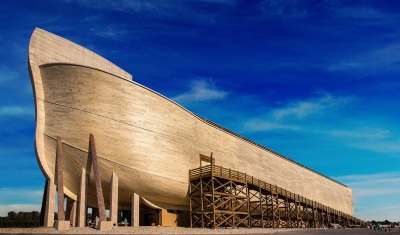7 biblical models of Kingdom advancement in adversity

Historically, the people of God have always fared well amid adversity. The history of both Israel and the Church has demonstrated how safety and prosperity took away their zeal. This resulted in them falling away from God (1 Kings, 2 Kings, Revelation 2:2-5, Revelation 3:17). As much as we don't like to hear it, God often allows adversity in our lives to motivate us to cling to Him and seek Him.
During these extremely difficult times as it relates to the pandemic, global economic, and political unrest, we should trust God to reveal His glory greater than ever before! This biblical principle is shown in Isaiah when he prophesied that when darkness covers the earth, the glory of God will be seen upon his people (Isaiah 60:2).
The following are the seven biblical models of kingdom advancement in adversity:
1. The Red Sea model of deliverance
When God led the children of Israel out of the bondage of slavery, they found themselves trapped between the army of Egypt and the Red Sea.
During this huge crisis of faith, God told Moses to “stand back and see the salvation of God” (Exodus 14:13). Consequently, God delivered them by parting the Red Sea so they could cross over on dry land and drowning the Egyptian army when they attempted to do the same thing. This great deliverance enabled the Jews to eventually cross into the promised land of their inheritance one generation later. Often, our greatest hardship allows God to demonstrate His mighty power for our deliverance and victory!
2. The Abrahamic model of Liminality
The first test of Abraham was one of liminality. Liminality is a state of transition between one stage and the next, especially between significant stages in one’s life when one transitions out of a place of comfort and stability to another place not yet manifested. God tested Abraham this way when He told him to leave his country and his family to a land God had yet to show him (Genesis 12:1, Hebrews 11:8).
Of course, Abraham’s obedience to this strange command secured an inheritance in the promised land for his descendants (Genesis 17:5-8). Hence, Christ-followers should embrace stages in their life when they have to transition by faith from a place of comfort to a place not yet revealed before God can bring them into their inheritance.
3. The Noahic model of blind obedience
Noah spent decades building an ark after God warned him concerning events that were not yet possible in his contemporary ecosystem (a deluge of rain causing a universal flood). Consequently, he became a social outcast while constructing a boat to save his household (Hebrews 11:7). His blind obedience resulted in saving his whole household and becoming a sort of “second Adam,” called to bear fruit, multiply, and have dominion (Genesis 9:1-2).
4. The Exodus/Acts model of multiplication in persecution
When the children of Israel multiplied in Egypt, Pharaoh responded by oppressing them. However, this devious scheme backfired because the more they were oppressed, the more they multiplied (Exodus 1:8-14). Acts also illustrate this principle when the Church continued to expand and multiply despite great opposition and persecution (Acts 3-5, Acts 8:1-4).
We also witness in contemporary times how the Church is expanding during persecution in nations like China, Iran, India, and beyond. Thus, the persecuted Church often produces devoted Christ-followers willing to risk their lives for Kingdom advancement and Gospel proliferation.
5. The David versus Goliath model
When David defeated Goliath, David modeled the principle of trusting God for victory despite having a huge natural disadvantage (1 Samuel 17).
Consequently, God curses those who trust in the arm of flesh and blesses those who trust in Him even in times of drought and natural adversity (Jeremiah 17: 5-8). In these days of hyperinflation, the prospect of World War III, and political polarity, God will honor the faith of those who put their trust in Him for ultimate victory
6. The Jesus model of death and resurrection
Jesus taught His disciples that they had to lose their life to save it (Mark 8:35).
He illustrated this attitude of self-denial when, in the garden of Gethsemane, He told His Father, “not my will but your will be done” (Matthew 26:39). Consequently, after His execution by crucifixion, God demonstrated His greatest cosmic act of power when He abolished death and brought life and immortality to light by raising Jesus from the dead (2 Timothy 1:10). The Apostle Paul also had to experience the sentence of death to learn how to trust God, who raises the dead (2 Corinthians 1:8-10).
Thus, sometimes the Church experiences a victorious resurrection after what seems to be a great defeat or death of their ministry.
7. The Pauline model of supernatural strength in weakness
As Paul matured in his faith, he learned to turn his natural weaknesses into a supernatural advantage through humility. He discovered that he could experience strength in Christ when he was weak. Therefore, he bragged about his weaknesses more than his natural strengths so that the power of Christ may rest upon him (2 Corinthians 11:30, 2 Corinthians 12:5). God actually allowed a messenger of Satan, “a thorn in the flesh,” to follow him around to buffet him (2 Corinthians 11:17-12:10).
He stopped praying to God to remove this “thorn in the flesh” after Jesus revealed to him that His grace is made perfect through his weakness (2 Corinthians 12:8-9). Consequently, instead of complaining during hardship, Christ-followers should embrace suffering and opposition as an opportunity to manifest the power of God through their weakness.
Dr. Joseph Mattera is an internationally-known author, consultant, and theologian whose mission is to influence leaders who influence culture. He is the founding pastor of Resurrection Church, and leads several organizations, including The U.S. Coalition of Apostolic Leaders and Christ Covenant Coalition.
To order his books or to join the many thousands who subscribe to his newsletter, go to josephmattera.org



























